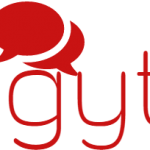Planning to have a financially strong retirement? Here are some suggestions with pros and cons of different retirement accounts.
Traditional Individual Retirement Accounts (IRAs)
Traditional Individual Retirement Accounts (IRAs) offer several advantages and considerations. The key benefit is that contributions to a traditional IRA are tax-deductible, providing an opportunity for immediate tax savings. Additionally, the investments within the account can grow tax-deferred, meaning you won’t owe taxes on the earnings until you withdraw them in retirement. Traditional IRAs also offer flexibility in investment options, allowing you to choose from a wide range of assets.
However, it’s important to note that traditional IRAs have required minimum distributions (RMDs) starting at age 72, meaning you must withdraw a certain amount each year, subjecting the distributions to income taxes. Early withdrawals before age 59½ may also incur penalties, and there are contribution limits that may restrict the amount you can contribute each year. Considering these factors, it’s crucial to assess your individual circumstances and consult with a financial advisor to determine if a traditional IRA is the right retirement account for you.
Pros
One of the significant advantages of Traditional Individual Retirement Accounts (IRAs) is that contributions to these accounts are tax-deductible, allowing you to lower your taxable income in the year of contribution. Additionally, the investments within a traditional IRA have the potential for tax-deferred growth, meaning you won’t owe taxes on the earnings until you withdraw them in retirement. This provides an opportunity for your investments to compound and grow more efficiently. Another benefit is the flexibility in investment options offered by traditional IRAs, allowing you to choose from a wide range of assets based on your risk tolerance and investment goals. Unlike some other retirement accounts, traditional IRAs have no income limitations for contributions, providing the opportunity for individuals at any income level to contribute and benefit from the tax advantages offered by these accounts.
Cons
However, Traditional Individual Retirement Accounts (IRAs) come with certain considerations. One such consideration is the requirement to take mandatory minimum distributions (RMDs) from the account after reaching the age of 72, which means you must withdraw a certain amount each year and pay taxes on the distributions. Additionally, withdrawals from traditional IRAs in retirement are subject to income taxes, potentially impacting your overall tax liability. Early withdrawals made before age 59½ may incur penalties, further reducing the funds available for retirement. It’s also important to note that traditional IRAs have contribution limits, meaning there is a maximum amount you can contribute each year, potentially limiting the extent to which you can build your retirement savings through this account. Considering these factors, it is crucial to assess your specific needs and consult with a financial advisor to determine if a traditional IRA aligns with your retirement goals.
Roth Individual Retirement Accounts (IRAs):
Roth Individual Retirement Accounts (IRAs) offer distinct advantages that make them an appealing retirement savings option. One notable benefit is the tax treatment of contributions and withdrawals. While contributions to Roth IRAs are not tax-deductible, the withdrawals in retirement are typically tax-free, including both contributions and earnings.

This feature allows for potentially significant tax savings in the long run. Another advantage is that Roth IRAs do not have required minimum distributions (RMDs) during the account holder’s lifetime, offering greater flexibility in managing your retirement savings. Additionally, Roth IRAs provide a wide range of investment options, allowing you to choose investments that align with your risk tolerance and long-term goals. However, it’s important to consider that Roth IRAs have income limitations for contributions, and early withdrawals before age 59½ may incur penalties. Understanding these factors and consulting with a financial advisor can help you determine if a Roth IRA is the right retirement account choice for your specific circumstances.
Pros
Roth Individual Retirement Accounts (IRAs) offer a range of advantages that make them an attractive option for retirement savings. One key benefit is the ability to make tax-free withdrawals in retirement, including both contributions and earnings, providing potential significant tax savings. Unlike traditional IRAs, Roth IRAs do not require mandatory minimum distributions (RMDs) during the account holder’s lifetime, allowing for greater flexibility in managing your retirement funds. Another advantage is the flexibility in investment options, allowing you to choose from a wide array of investments that suit your risk tolerance and financial goals. Additionally, Roth IRAs offer the potential for tax-free growth, as the investments within the account can grow without being subject to taxes, providing the opportunity for your savings to compound and grow more efficiently over time.
Cons
Roth Individual Retirement Accounts (IRAs) provide several appealing features for retirement savings. One significant advantage is the ability to make tax-free withdrawals during retirement, encompassing both contributions and earnings. Unlike traditional IRAs, Roth IRAs do not have mandatory minimum distributions (RMDs) throughout the account holder’s lifetime, allowing for more flexibility in managing funds. Additionally, Roth IRAs offer a wide range of investment options, granting you the freedom to select investments that align with your risk tolerance and financial objectives. Furthermore, Roth IRAs have the potential for tax-free growth, as investments can accumulate without incurring taxes, enabling your savings to grow more efficiently over time.
401(k) Plans
401(k) plans are popular employer-sponsored retirement savings accounts that come with notable advantages. One key benefit is the potential for employer matching contributions, where employers match a portion of the employee’s contributions, effectively increasing the total savings. Additionally, 401(k) plans offer higher contribution limits compared to Individual Retirement Accounts (IRAs), allowing individuals to save more towards their retirement.
Pros
401(k) plans offer several advantages that make them an attractive option for retirement savings. One significant benefit is the potential for employer matching contributions, where employers contribute a portion of the employee’s contributions, effectively boosting the overall savings. Additionally, 401(k) plans have higher contribution limits compared to Individual Retirement Accounts (IRAs), allowing individuals to save more towards their retirement.
These plans also provide tax-deferred growth, meaning that investments within the account can grow without being taxed until withdrawals are made in retirement. Another convenience is the automatic payroll deductions, which make it easy for employees to contribute regularly and consistently. Furthermore, 401(k) plans offer flexibility in investment options, allowing individuals to choose from a range of investment vehicles based on their risk tolerance and financial goals. Together, these features make 401(k) plans a powerful tool for long-term retirement savings.
Cons
While 401(k) plans offer numerous advantages, there are some considerations to keep in mind. One limitation is the limited investment options available, typically determined by the employer, which may restrict your ability to choose specific investments. Additionally, early withdrawals made before age 59½ may result in penalties, reducing the funds available for retirement.
Withdrawals in retirement are subject to income taxes, potentially impacting your overall tax liability. It’s also important to note that some employers may impose vesting schedules for their contributions, meaning that you may not have full ownership of the employer-contributed funds until you meet certain conditions. Considering these factors, it’s crucial to evaluate the investment options, understand the tax implications, and review the specific terms of your 401(k) plan to make informed decisions about your retirement savings strategy. Consulting with a financial advisor can provide valuable guidance tailored to your individual circumstances.
Roth 401(k) Plans
Roth 401(k) plans offer tax-free withdrawals in retirement, no required minimum distributions (RMDs), potential employer matching contributions, but have income limitations for contributions and penalties for early withdrawals.
Pros
Roth 401(k) plans provide several advantages for retirement savings. One significant benefit is the ability to make tax-free withdrawals in retirement, including both contributions and earnings. Unlike Roth IRAs, Roth 401(k) plans do not have income limitations for contributions, allowing individuals at any income level to participate. Employers may also offer matching contributions, further boosting retirement savings. Additionally, Roth 401(k) plans have higher contribution limits compared to Roth IRAs, enabling individuals to save more towards their retirement. The convenience of automatic payroll deductions makes it effortless for employees to contribute regularly. With these features, Roth 401(k) plans offer a powerful and flexible tool for long-term retirement planning.
Cons
When considering Traditional 401(k) plans, it’s important to note that contributions are not tax-deductible, meaning they are made with after-tax income. In retirement, withdrawals are subject to taxes if the account hasn’t been held for at least five years. Another consideration is the limited investment options available, typically determined by the employer, which may restrict your investment choices. Additionally, some employers may impose vesting schedules for their contributions, meaning you may not have full ownership of the employer-contributed funds until you meet certain requirements. Understanding these factors helps individuals make informed decisions about their retirement savings and consult with a financial advisor to create an appropriate plan.





